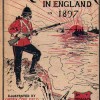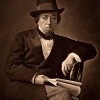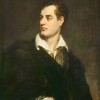
Anna Vaninskaya, “Russian Nihilists and the Prehistory of Spy Fiction”
Although the rise of modern British spy fiction is usually dated to the Edwardian period, with the names of Kipling, Conrad and Buchan among the first to be mentioned, the genre owes its existence to a little-noted precursor in late Victorian popular literature: the Russian Nihilist romance. Many of the ideological and formal aspects of the genre can be traced back to the tales of police espionage, terrorist revolutionaries, and double agents that titillated audiences in the last decades of the nineteenth century. In the 1880s and 90s, the age-old literary figure of the spy underwent a number of transformations that would establish its new meanings for the new century.

Carol Senf, “‘The Fiddler of the Reels’: Hardy’s Reflection on the Past”
While Thomas Hardy was invited to submit something to a special number of Scribner’s Magazine that was published to celebrate the 1893 Chicago World’s Fair, the story he submitted, “The Fiddler of the Reels,” focuses on several characters whose lives are impacted by the Great Exhibition of 1851. The focus on the two world’s fairs might lead readers to believe that Hardy was an advocate of the kinds of scientific and technological progress that such spectacles tended to celebrate. However, Hardy’s story demonstrates the power of more primitive forces and actually undermines such an easy belief in progress. By ending with a character that clearly represents primal forces that are never suppressed, the story demonstrates that the power of the primitive past is never far from the surface and may emerge at any moment to triumph over the representatives of the present.

Thomas McLean, “Donation and Collaboration: Joanna Baillie’s A Collection of Poems, Chiefly Manuscript, and From Living Authors, April 1823″
The Scottish poet and playwright Joanna Baillie spent most of 1822 soliciting unpublished or uncollected works from literary acquaintances, including Anna Barbauld, William Wordsworth, and Sir Walter Scott, for a new volume of verse. The purpose of the volume, which appeared in April 1823 as A Collection of Poems, Chiefly Manuscript, and from Living Authors, was to raise funds for a family in financial distress. Relying on Baillie’s letters and new archival research, this essay tells the fuller story of Baillie’s Collection and considers it as an innovative act of literary philanthropy, a precursor to the British annual, and a significant gathering of one strand of Romantic-era poetry. An amended table of contents identifies some of the anonymous and lesser-known contributors.

Robert O’Kell, “On Young England”
Young England was a short-lived social and political movement that developed from the altruistic ideas of a small parliamentary ginger group within the Conservative Party in the 1840s. At the core of the movement were Benjamin Disraeli (their acknowledged leader), Lord John Manners, George Sydney Smythe and Alexander Baillie Cochrane, all of whom were appalled at the state of party politics, class conflict, and the economic and moral condition of Victorian England’s poor. Their dissatisfaction with Sir Robert Peel’s leadership of the Party gained popular momentum when, between 1844 and 1847, Disraeli published a trilogy of novels that embodied both devastating satirical attacks on traditional Tory politics and an idealistic, nostalgic vision of a revitalized aristocracy motivated by social duty.

Marjorie Stone, “The ‘Advent’ of Aurora Leigh: Critical Myths and Periodical Debates”
Released by Chapman and Hall on 15 November 1856, Elizabeth Barrett Browning’s Aurora Leigh—a verse-novel and modern epic—set off literary, social, and political reverberations in Britain, North America, and Europe up to the end of the century. “The advent of ‘Aurora Leigh’ can never be forgotten by any lover of poetry who was old enough at the time to read it,” Algernon Charles Swinburne recalled in 1898. By 1900, Aurora Leigh—among much else the first extended poetical portrait of the professional woman writer in English literature—had appeared in more than twenty editions in England and as many in America. Given its innovative, generically mixed form and its controversial contemporary subject matter, it figured in debates over poetry and poetics, the nature of the realist novel, class divisions and social reform, women’s rights, religion, and the politics of nations. Contrary to the critical legend that Aurora Leigh was greeted by an “avalanche of negative reviews,” responses to it were diverse, shaped by periodical competition and differing print-culture, artistic, political, national and religious contexts. This essay surveys seldom-cited notices in the transatlantic daily and weekly press, analyzes critical debates on Aurora Leigh in the major British periodicals, and charts differing patterns in its American and European as compared to its British reception in the years immediately following its publication. It also indicates at points how debates over Aurora Leigh were intertwined with debates in the visual arts associated with the paintings of J. M. W. Turner and the Pre-Raphaelites.

Michelle Allen-Emerson, “On Magazine Day”
Magazine Day refers to the last day of every month when wholesale booksellers in London received the new monthly serial publications and prepared them for distribution. The monthly event determined the rhythm of the publishing industry for much of the nineteenth century and thus reflects the growing importance of serials to the nineteenth-century book trade.

Anna Maria Jones, “On the Publication of Dark Blue, 1871-73″
Dark Blue (1871–73) was a monthly magazine, edited by Oxford undergraduate John Christian Freund, which folded two years after a brilliant debut. During its brief run, it brought together a stunning list of literary and artistic contributors, including Dante Gabriel Rossetti, A. C. Swinburne, William Morris, Andrew Lang, Mathilde Blind, Sheridan Le Fanu, Simeon Solomon, and Ford Madox Brown, who produced aesthetically and sexually daring poetry, art, and criticism. However, it also strove to “appeal to the whole English-speaking public,” as Freund put it, and, thus, included much that might be described as middlebrow, even conservative. Whereas individual texts from Dark Blue, such as Le Fanu’s Carmilla, have received considerable attention, scholars have devoted very little sustained attention to the journal beyond noting its importance as an “artifact” in the history of the Pre-Raphaelite Movement and British aestheticism, and registering puzzlement at the journal’s eclecticism. This essay returns to Dark Blue to uncover common threads among dissimilar writers and artists. With particular attention to the journal’s commitments to transnationalism, I trace three intertwined threads—synesthesia, translation, and sexual dissidence—as they manifest in key texts by Swinburne, Solomon, Le Fanu, and others. Reading these texts in their original context not only demonstrates Dark Blue’s importance to early formations of aestheticism but also helps us to see how aestheticism connects with, rather than stands in opposition to, mid-Victorian culture.

Jane Stabler, “Religious Liberty in the ‘Liberal,’ 1822-23”
A survey of the negative twentieth- and twenty-first-century critical reception of the Liberal; a summary of the history of the journal and a re-evaluation of the philosophical and political coherence of the journal, focusing on its defence of religious liberty and suggesting that religious free thought is a previously overlooked component in the politics of liberalism. The criticism of doctrinal rigidity and advocacy of different forms of religious toleration evident in the four issues of the Liberal support the claim that the journal forms a lucid and intelligible cultural intervention.

Anna Kornbluh, “Thomas Hardy’s ‘End of Prose,’ 1896”
This entry considers Thomas Hardy’s “End of Prose,” his renunciation of the novel in favor of poetry, as an important event in nineteenth-century literary history, motivated by aesthetic concerns. It reads the geometric imagery in Hardy’s final novel, Jude the Obscure, in connection with the advent of non-Euclidean geometry, suggesting that mathematical forms inspired Hardy’s turn to the poetic line.

Claudia Nelson, “Mass Media Meets Children’s Literature, 1899: E. Nesbit’s The Story of the Treasure Seekers“
Looking both backward and forward, E. Nesbit’s The Story of the Treasure Seekers stands at the intersection of Victorianism and modernism. The novel crosses borders in another sense as well: in its handling of references to advertising, newspapers, and iconic historical events, it highlights the extent to which fact and fiction, reportage and mythmaking, alike depend upon artifice. The publication of Nesbit’s breakthrough work, which foregrounds the importance of mass culture to middle-class children’s imaginations, marks a historical change in perceptions of children’s relationship to consumerism.
